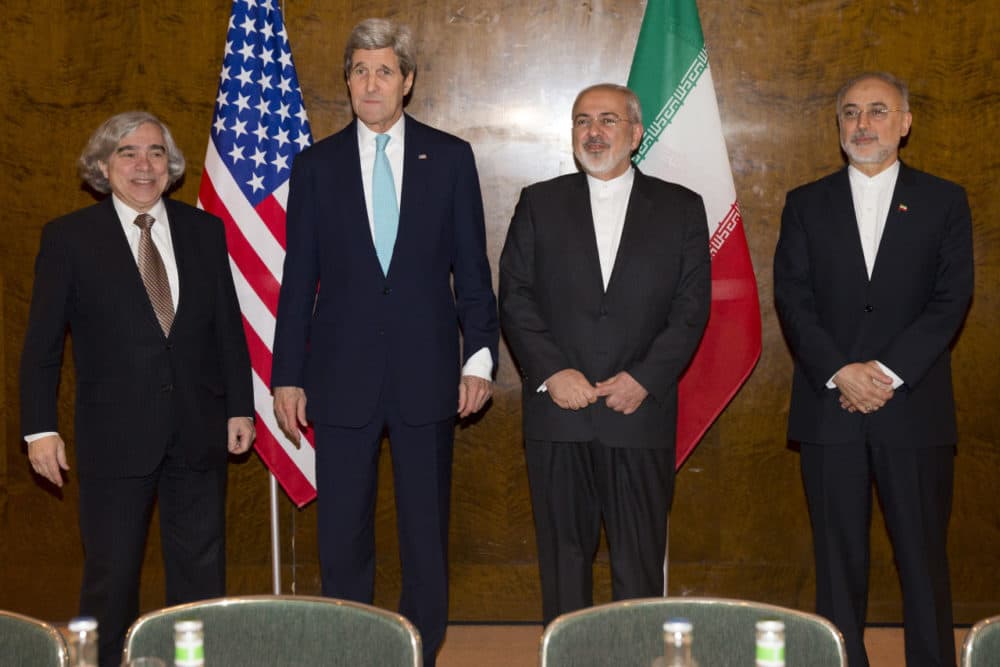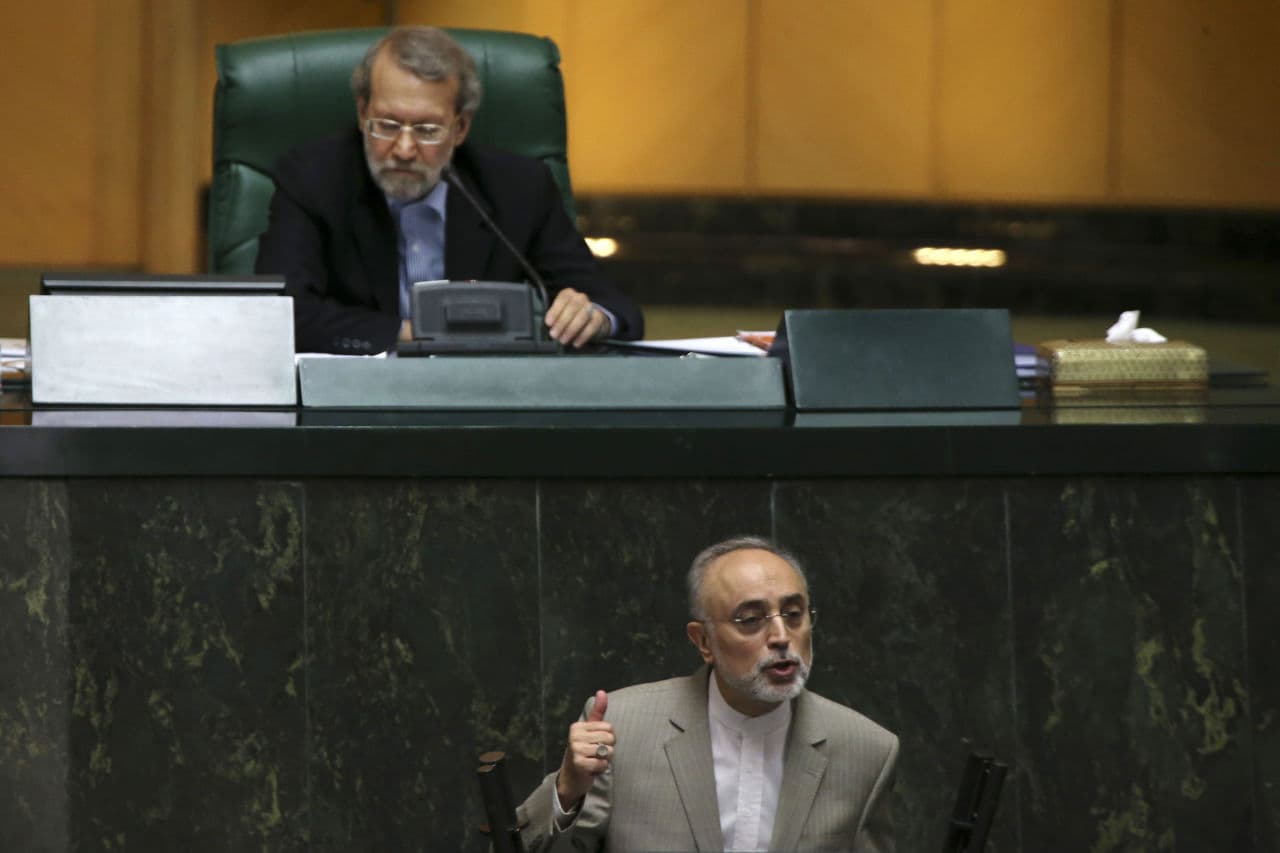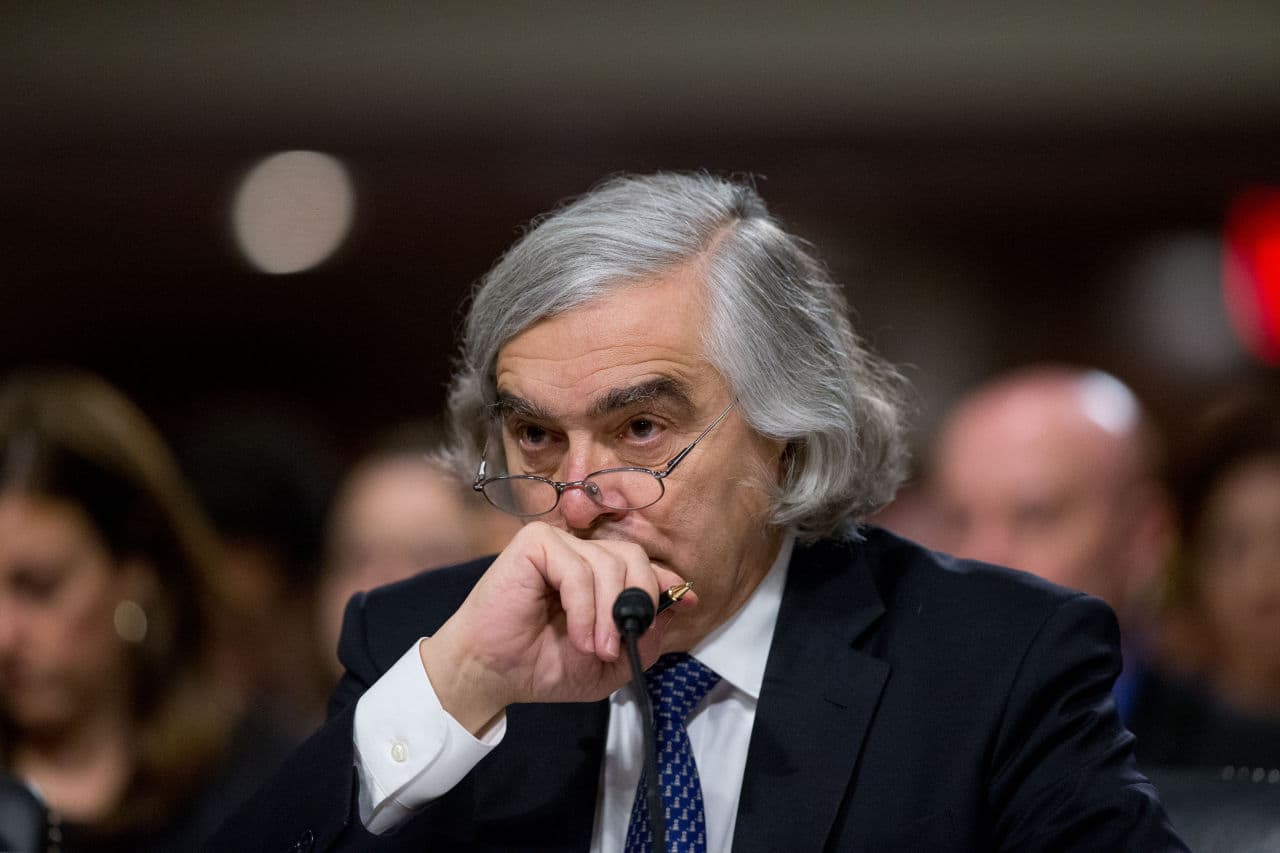Advertisement
For 2 Key Iran Deal Negotiators, MIT Experiences Created A Helpful Connection
Resume
U.S. Secretary of Energy Ernest Moniz and Ali Akbar Salehi, the head of the Atomic Energy Organization of Iran, never knew each other during their time at the Massachusetts Institute of Technology. But the university provided a connection as they worked out the technical aspects of the Iranian nuclear deal.
A Program Not Everyone At MIT Supported
Many in the U.S. today question whether Iran needs a nuclear power program. But in the 1970s, the U.S. was encouraging its then-ally to develop one. And MIT played a role in that effort.
"Nobody anticipated that we would have 35 years of confrontation with Iran," said Richard Lester, the head of MIT's nuclear science and engineering department, who was also a student at MIT in those days. "Certainly nobody anticipated that one of the people that would be involved in trying to resolve that confrontation was one of those students who came to MIT from Iran in the 1970s."
That student is Ali Akbar Salehi, the man who negotiated the technical aspects of the proposed nuclear deal with the U.S. and five other world powers.

Mo Moghimi, who lives in Newton now and teaches at Middlesex Community College, remembers Salehi from their days together at MIT. Moghimi was one of the Iranian students chosen to attend MIT through a special program aimed at training Iranian nuclear engineers.
"Ali Salehi was our classmate. He was there two years before us," Moghimi said. "He had at that time passed his doctoral exam. He was like a guide to the rest of us."
Kent Hansen was the acting chairman of MIT's nuclear engineering department while Salehi and Moghimi were on campus. He said he interviewed some 50 students in Tehran for the special program.
During this period, opposition to the Shah of Iran was growing both in Iran and among Iranian students in the U.S. Hansen says not everyone at MIT supported the program for Iranian students.
"When this program was first created there was opposition on the campus on the grounds that the Shah was a terrible person," Hansen said. "We didn't want him to have any kind of knowledge that would help him build a weapon."
Among those who objected to the program was MIT linguistics professor Noam Chomsky. He wrote in an email to WBUR that he was "very much opposed" to the program.
"The student body was overwhelmingly opposed, but only a few faculty were, me among them," Chomsky wrote. "We did not think that MIT should (in effect) 'sell' its nuclear engineering department to anyone, certainly not to a brutal dictator with one of the worst human rights records in the world."
For Moghimi, though, the program was an opportunity to learn how to build nuclear power plants in Iran.
"In August 1975 I came to Boston, and we were a group of close to 29 students, and they were all vibrant, working hard, almost all of them are successful," he said.
Two years later, the Iranian Revolution began. Two years after that, the Shah was deposed and Ayatollah Ruhollah Khomeini came to power.
Moghimi decided to return to the U.S. soon after that point, and he was not the only one from his group at MIT to do so. Most of the Iranian students from that MIT program now live in the U.S. and Canada. However, some did stay in Iran, like Salehi.
Moghimi recalls how at one point, Salehi came back to the U.S. to try to recruit some of the Iranians who had studied with him at MIT.
"He came here and he talked to a group of students who were here from all kinds of backgrounds, not just nuclear," he said.
Hansen does not believe that the students' MIT training contributed much to Iran's ability to produce highly-enriched uranium or plutonium — the two materials used in nuclear weapons.
"I don't think the students garnered anything that would do much to help the Iranian nuclear program," Hansen said. "The technologies are just so wildly different."
Fortuitous Circumstances
At the same time that Salehi was studying at MIT, U.S. Secretary of Energy Ernest Moniz was just beginning to teach there.

Lester, the head of MIT's nuclear science and engineering department, attended MIT at the same time as Salehi. He knew both of the men.
"Salehi was a Ph.D student at MIT in the nuclear engineering department. Moniz was starting out as an assistant professor of physics at MIT," Lester recalled, adding that Salehi was a "very well-liked, well-regarded student."
Hansen, the former acting chair of MIT's nuclear engineering department, believes it to be a fortuitous circumstance that Salehi and Moniz ended up on opposite sides of the table as key negotiators in the Iran nuclear talks.
"Ernie is a very bright, sophisticated guy, who is very good at finding out what are the significant issues in any discussion we're having," Hansen said.
Moghimi believes Moniz and Salehi developed many of the skills they needed for the negotiations during their time at MIT.
"They can calculate exactly to the micro level how dangerous would it be if we use atomic weapons or weapons of mass destruction of any kind," Moghimi said. "That background, that training at MIT or being a professor at MIT, helps them a lot. That friendship and bond that brings all of us together, that has helped them a lot."
In Lester's eyes, that common experience at MIT seemed to be a foundation for the two men's negotiations.
"The fact that they had MIT in common was surely not unhelpful in the progress of the negotiations," Lester said. "They started out here at about the same time, and I think that when you have something like that in common it does help."
And it's not that MIT is just a "good old alma mater," Hansen said. "It's that MIT is something you survive. It's so demanding, it forces people to learn faster than they've ever learned before, and that creates a common bond among those who go through it.
"MIT engenders a lot of respect, and if people go through that program and they meet each other, they can communicate fairly easily," Hansen added.
Salehi and Moniz likely bonded over their shared connection to MIT — and ultimately, the pair were able to help forge a historic deal over Iran's nuclear program.
This segment aired on July 27, 2015.
